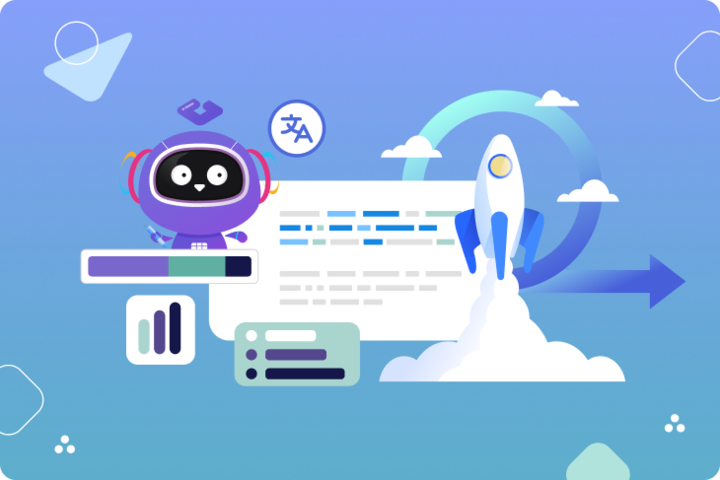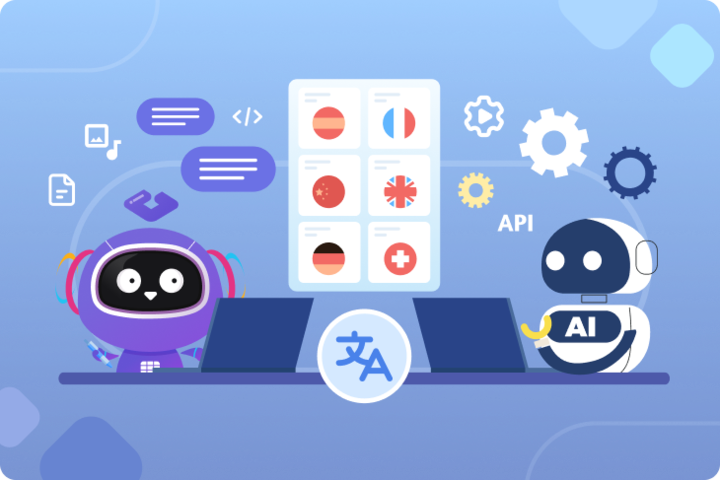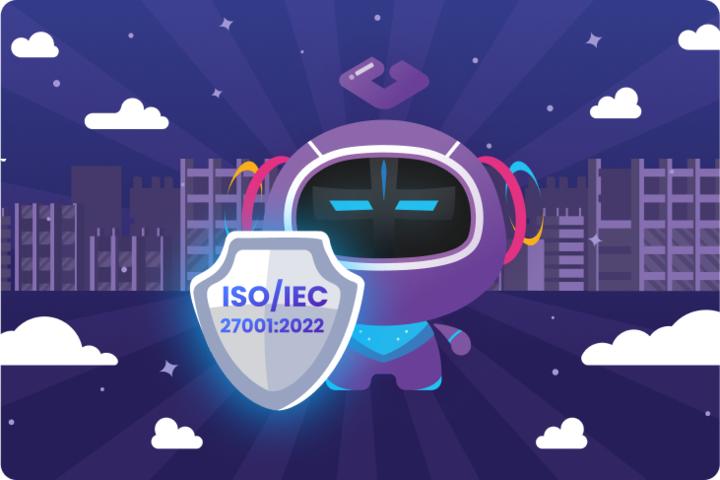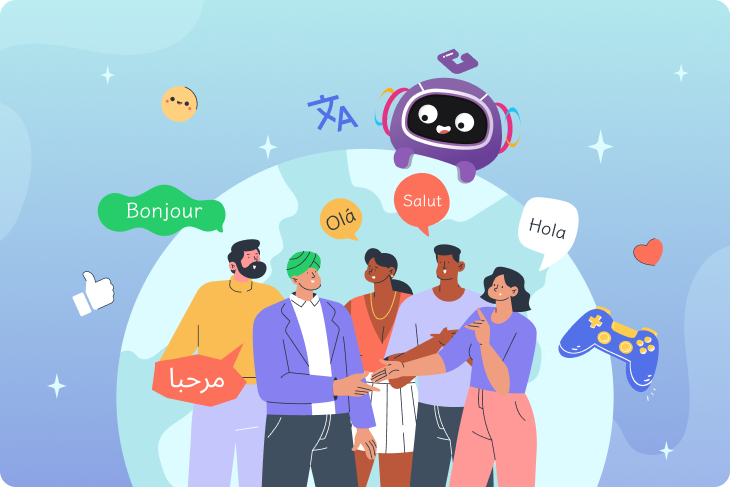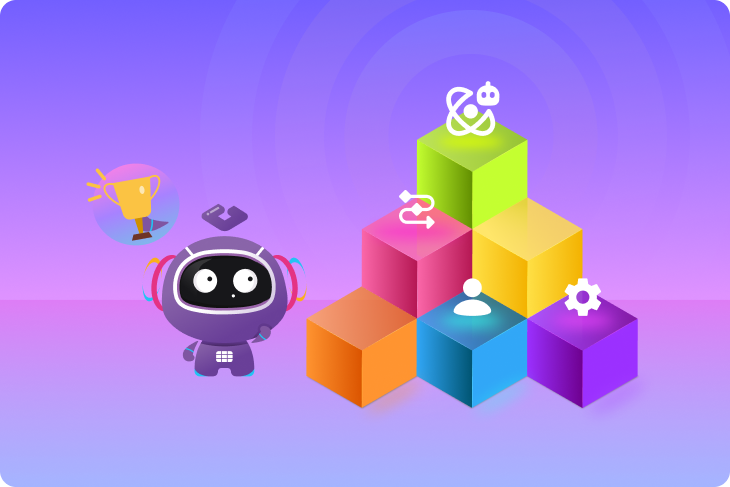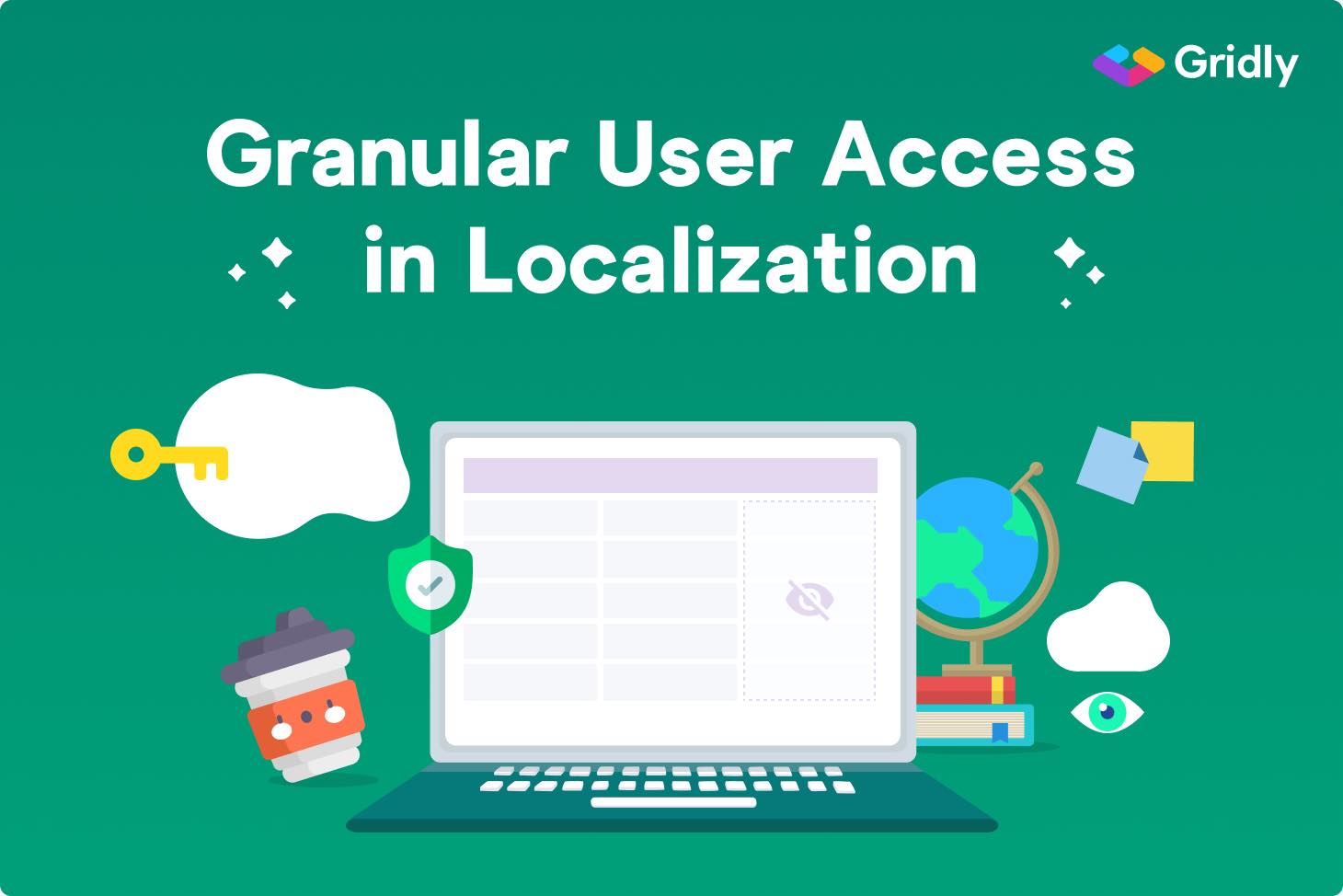What’s covered
- The shift toward agile localization in game development
- The hidden cost of fragmented localization
- Empowering agile localization with integrated platforms
- Real-world results and competitive advantages
- Conclusion
During Gridly’s recent virtual launch event, CEO Anna Albinson revealed a fundamental shift in how successful game studios approach localization: “Global readiness is no longer something that you add – it’s something that you build in from the start.” This insight captures why traditional text-focused localization strategies are failing modern studios and emphasizes the urgent need for agile localization workflows in game development.
The virtual launch demonstrated how localization goes far beyond translating dialogue and menu text. Modern games are multimedia experiences that blend text, audio, images, animations, and interactive elements, all requiring careful adaptation for global audiences. As Christoffer Nilsson, Gridly’s Chief Product Officer and former CEO, noted during the presentation, the industry is moving toward “agile and continuous localization as the norm,” where an effective agile localization workflow must be embedded into game development processes from day one.
The shift toward agile localization in game development
Why traditional workflows break down
The virtual launch presentation highlighted a critical problem with conventional approaches to game localization. Traditional methods create content fragmentation where content is scattered across different systems with lots of copying, pasting, exporting and importing, making it difficult to maintain an efficient agile localization workflow.
Consider the typical game development scenario where a dialogue scene requires updates based on player feedback. In traditional workflows, this simple change triggers a cascade of manual handoffs between different systems and teams. The updated script needs retranslation, voice actors must re-record lines in multiple languages, subtitle timing requires adjustment, and related UI elements may need modification. Each handoff creates opportunities for errors, version mismatches, and lost context that slow down any agile localization workflow.
Modern game development demands faster iteration, but traditional localization workflows were designed for waterfall development where content remained static once “finished.” The reality is that games evolve constantly throughout development, and agile localization workflows must accommodate this fluid environment.
Explore the modern game localization workflow
The shift to continuous agile localization
Agile localization treats translation and cultural adaptation as ongoing development activities rather than discrete project phases. This approach enables an optimized agile localization workflow that provides:
- Faster response to market feedback through iterations
- More iterative quality improvement
- Better games for global audiences
- Reduced localization bottlenecks in development
Anna’s presentation revealed how game studios are adapting to this new reality. As she noted during the virtual launch, users are joining platforms earlier in the development cycle and staying active for longer periods, signaling a fundamental shift toward continuous rather than batch processing in agile localization workflow design. This behavioral change reflects the industry’s recognition that agile localization provides competitive advantages in speed, quality, and cost efficiency.
Additionally, Anna shared compelling data about AI adoption: the percentage of users actively using AI-powered capabilities in their agile localization workflow has moved from 15% to 50% in just two years, demonstrating that AI is becoming a trusted part of how modern games implement localization.
The hidden cost of fragmented localization
Let’s dig deeper into the traditional workflows for localization and what they entail.
Copy-paste hell: A cautionary tale
The virtual launch included compelling examples of how traditional localization workflows create operational nightmares. Christoffer shared how one client struggled with sending players push notifications across millions of devices in 15 different languages using manual workflows.
“Before Gridly, it was a pure copy paste hell for our client and that’s not fun,” Christoffer noted. This example illustrates a common pattern: what should be a simple operational task becomes a complex, error-prone process when an agile localization workflow is fragmented across multiple systems.
The push notification scenario reveals several critical problems with traditional approaches:
- Manual copying and pasting across multiple different language files
- No centralized coordination between translation teams
- Error-prone handoffs between content creation and distribution systems
- Inability to track changes or maintain consistency across languages
- Significant time delays that impact real-time communications with players
The dependency spaghetti
Christoffer also highlighted dependency tracking as a critical pain point in traditional workflows: “Change tracking is a common pain point. It gets even more complex when you try to have multi-dependencies such as having audio recordings relying on translated dialogue.”
This dependency problem multiplies across complex game projects. When source content changes, traditional systems fail to automatically identify all affected downstream elements. For example, updating a character’s name affects:
- Their dialogue throughout the game
- Achievement descriptions that reference the character
- Marketing copy featuring the character
- Audio file naming conventions
- Subtitle displays throughout the game
Without automated dependency tracking, these changes require manual coordination across multiple teams and systems, creating opportunities for errors and missed updates that can break the player experience.
Lost context and quality issues
Traditional approaches lose crucial context when fragmented systems cannot support the same type of contextual metadata. When translators work without visual context, character descriptions, or usage examples, they make decisions in isolation that may require costly revision later in the agile localization workflow. This context loss directly impacts both quality and efficiency, requiring additional review cycles and rework that slows time-to-market.
Empowering agile localization with integrated platforms
These challenges have driven the development of integrated localization platforms that address fragmentation at its source. This integrated approach solves the fundamental problems that prevent truly effective agile localization workflow implementation.
Breaking down traditional silos
Unified localization platform approaches directly address the fragmentation problems that plague traditional workflows. Modern agile localization platforms create single environments that unify teams and content while maintaining flexibility for integration with existing development ecosystems.
Effective platforms structure their approach with integrated modules:
- Content management system for creating and organizing content with metadata and automations.
- Translation management system for coordinating translation processes.
- Computer-assisted translation tools for translators and editors to work efficiently.
When content management, translation coordination, and linguistic tools operate as separate systems, the handoffs between them create bottlenecks. By unifying these functions, teams can implement genuine agile localization without the friction of constant data exchange between incompatible systems.
Streamlined agile localization workflow in action
Returning to the push notification example, integrated platform approaches transform the entire agile localization workflow. Using streamlined processes with API connectivity, teams can:
- Create notification content in centralized content management systems
- Coordinate translation across 15 languages through integrated translation management
- Deliver final content directly to distribution systems via API
This eliminates the “copy-paste hell” by creating single workflows that handle content creation, translation coordination, and delivery automatically. The transformation from manual chaos to streamlined automation demonstrates the competitive advantage that an optimized agile localization workflow provides.
Check out Gridly API’s capabilities
Modern integrated agile localization platforms address dependency management that traditional systems can’t handle. When developers update source content, the system automatically flags affected translations, audio files, and related assets, ensuring nothing falls through the cracks during rapid iteration cycles.
This smart tracking system prevents the cascade of manual coordination that traditional workflows require, enabling faster iteration while maintaining quality and consistency across all content types and languages in an agile localization workflow.
Rich context for translators
Modern solutions provide translators with comprehensive context through an enhanced agile localization workflow including:
- Screenshots and visual references through multimedia content support
- Character information from reference systems
- Relevant glossary terms automatically assembled for each content segment
- Context about content usage and purpose through organized content structures
This comprehensive context enables translators to make better initial decisions that require fewer revisions, supporting the faster iteration cycles that agile localization demands while improving translation quality.
Michael Souto, Gridly’s Business Development Director, provided a live demonstration during the virtual launch showing how integrated systems enable seamless agile localization workflow implementation.
Automated quality assurance
Agile localization requires speed-matching quality assurance. Modern localization platforms check immediately when translators submit their work to identify:
- Missing tags detection using automated validation rules
- Spelling errors
- Formatting consistency verification
- Technical constraint validation
These automated validations catch common issues before they reach human reviewers, enabling faster feedback cycles and reducing the overall time from content creation to localized delivery in an optimized agile localization workflow.
Learn more about automated QA in Gridly
Real-world results and competitive advantages of agile localization workflows in game development
Teams implementing agile localization through integrated platforms see significant competitive advantages. The transformation from manual, fragmented workflows to automated, unified processes creates measurable benefits that directly impact business outcomes.
Speed advantages: Traditional workflows that take weeks to propagate content changes can be reduced to days or hours with integrated systems. The push notification example demonstrates this transformation – what was previously “copy paste hell” across 15 languages became an automated workflow that eliminates manual coordination entirely.
Operational efficiency: Automated dependency tracking prevents the cascade of manual coordination that traditional workflows require. When developers update source content, systems automatically flag affected translations, audio files, and related assets – eliminating the time-consuming detective work of identifying what needs updating. Additionally, by implementing modern localization platforms that support integration capabilities with game engines like Unity and Unreal Engine, plus API access for custom workflows, companies can ensure agile localization stays synchronized with rapid development iteration without coordination overhead.
Quality improvements: Integrated platforms provide translators with comprehensive context including screenshots, character information, translation memory, and glossary terms. This rich context enables better initial translation decisions, reducing revision cycles and improving overall localization quality.
Conclusion
The insights from Gridly’s virtual launch event reveal how agile localization has become a critical competitive differentiator in global game markets. Studios that embrace integrated workflows gain measurable advantages: faster time-to-market, predictable costs, higher quality translations, and the ability to scale across more languages efficiently.
The competitive edge comes from breaking down traditional silos between content creation, translation, and implementation. While competitors struggle with “copy-paste hell” and manual coordination across fragmented systems, forward-thinking studios use seamless workflows to respond quickly to market demands and maintain consistency across all target markets.
As the gaming industry becomes increasingly global, agile localization isn’t just an operational improvement – it’s a strategic advantage that determines which studios can successfully compete in international markets.
For teams ready to integrate agile localization workflows in their game development process, explore how Gridly can become your game localization platform.
This blog post contains insights extracted from Gridly’s Virtual launch event. Watch the full Gridly’s virtual launch on YouTube.
